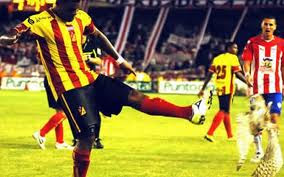Vale of Leven?? Heard of the club? Located in the small Dumbartonshire town of Alexandria, the club was a founder member of the Scottish Football League, when it was formed in 1890. They won three Scottish Cups in a row in 1877 to 1879; three other clubs have done this; Queen's Park, Aberdeen and Glasgow Rangers.
In the early days of Scottish football, Vale of Leven and their neighbours Renton, were real powers in the land, thanks to significant backing from local factories; Vale was backed by Archibald Orr-Ewing's dye works, which meant that Vale could recruit players as factory workers but allow them the time and facilities to play football.One early controversy over this veiled professionalism came in the 1874-5 Scottish Cup. The club was drawn against Clydesdale FC. in the first round; the Glaswegian club protested the presence in the Vale side of John Ferguson, who, as a former professional athlete, was barred from playing in the competition at the time, even though Ferguson was described as an amateur who "usually wrought in the Vale of Leven from year to year, and no objection was made to him in the international match"; the tie was played under protest, and, after a goalless draw, Vale withdrew rather than re-play.
Luck plays a role, of course and in 1877, the Final ended in a 1-1 draw and a pitch invasion. Rangers had scored an extra-time goal, not spotted by the referee! There were no goal nets in those days and the ball entering the goal, hit a spectator behind the goal line and bounced back to the safe hands of the Vale of Leven keeper, who of course admitted to the save (not the goal). In the replay, Vale won 3-2.
The rule was changed for the next season and Vale promptly reached the semi-final, and then won the Cup three times in succession (1877, 1878 and 1879). After retaining the cup, in 1878, beating Third Lanark, they were awarded the cup again in 1879, after a 1-1 draw with Rangers who had a perfectly good goal ruled out for off side. Disappointed, Rangers refused to contest a replay remembering what had happened to them two years earlier!
In 1878, Vale travelled down to England and beat the English FA Cup winners,The Wanderers, 3–1 at Kennington Oval. The Wanderers had the advantage that the game was played under the English throw-in rule, but the Vale's Scottish Passing Game, proved superior to the English game of individual dribbling. Two different styles of playing at the time.
In 1884, Vale of Leven's luck ran out having reached another final against Queen's Park. Vale announced that they couldn't contest the match following several injuries to their "squad". On top of this another player from their team had suffered a "family bereavement" and politely asked for the match to be rearranged. It could not!
Instead the Scottish FA arranged another game between Queen's Park, the other finalists and Third Lanark. Before the match, Queen's Park were awarded the trophy by default!! Vale of Leven threw a wobbly and refused to play a scheduled mathc the following week against Partick Thistle; Joseph Halley, Thistle's president, sat on the Scottish FA committee that denied Vale's cup final request!!
Vale lost the following season's Cup Final against neighbours Renton, 1-3 and lost to Queen's Park in the 1890 Final, the end of the club's "love affair" with the Scottish Cup. Vale were founder members of the Scottish League in 1890 but left it two seasons later after failing to won a match in the 1891-2 season. Celtic won the Scottish Cup that season and the "big boys" started to take over!












